58 Stunning Aeonium Varieties (With Pictures)
Aeonium is a type of succulent with beautiful rosettes made of fleshy leaves. These plants are great at storing water in their thick leaves, allowing them to survive in dry places. They belong to the Crassulaceae family.
If you’re curious about the type of succulent you have, this article will help you identify 58 common and rare Aeonium varieties.
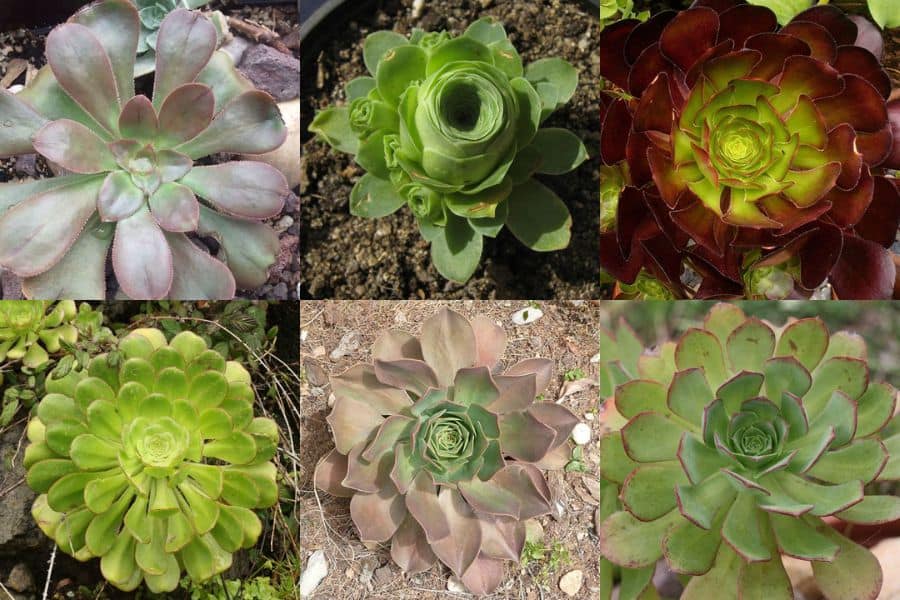
Related Post:
1,000 Types of Succulents With Pictures.
Contents
Aeonium Varieties
There are different types of Aeonium plants. Some have long, woody stems where the rosettes sit, while others appear to be stemless because their stems are very short. All rosettes shed their lowest leaves.
Aeonium plants can have one stem with one rosette or several stems. The leaves of these plants can be thick and tough or soft and brittle. In species with woody stems, you’ll see scars on the stem where the leaves were attached.
Mature Aeonium plants produce small, cream-colored, or yellow-green flowers in the middle of their rosettes. They can bloom at any time of the year. However, after a rosette flowers (which usually happens when the plant is four to five years old), it dies. Aeonium types with only one rosette finish their life cycle after flowering.
Aeonium varieties with multiple rosettes usually bloom on all shoots at the same time. Sometimes, though, some of the rosettes may flower later than others.
Aeonium aizoon
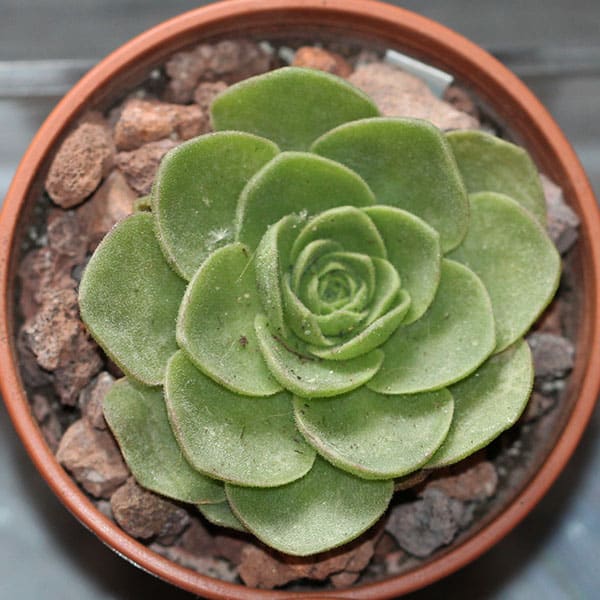
Aeonium aizoon, also known as Greenovia aizoon, is a perennial succulent with clumps of tiny, dark green rosettes. These rosettes sit on reduced stems and retain dead leaves. When it blooms, a 6-inch tall flowering stem appears, adorned with small yellow flowers.
Aeonium appendiculatum

Next, we have Aeonium appendiculatum, a tall, unbranched subshrub that can grow up to 3 feet in height. Its large rosettes, measuring 12 to 14 inches across, have oblong to oval-shaped leaves. These leaves are bluish-green and glabrous, with pointed tips. In the spring, dome-shaped inflorescences covered in variegated white and pinkish flowers grace the plant.
Aeonium arboreum
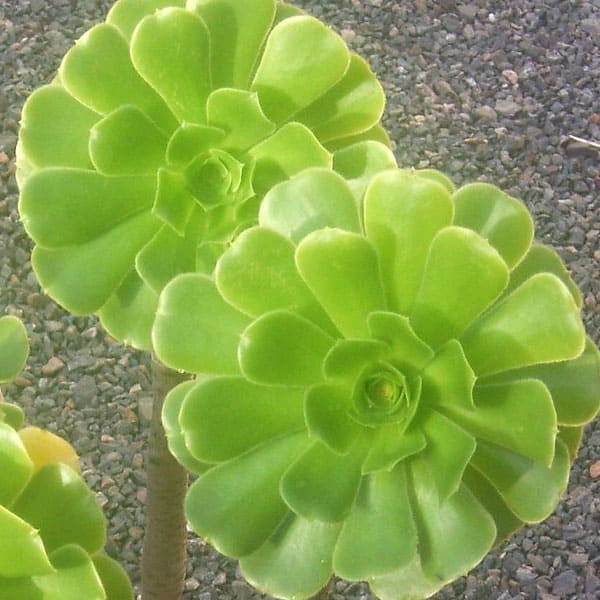
Aeonium arboreum, also known as the tree houseleek, is an open subshrub reaching heights of 3 to 6 feet. With flat rosettes of leaves and pyramidal panicles of bright yellow flowers in the spring, this variety is a sight to behold. Keep in mind that each rosette that blooms will eventually die. There are a few types of Aeonium arboreum as shown below.
Aeonium arboreum cv ‘Zwartkop’
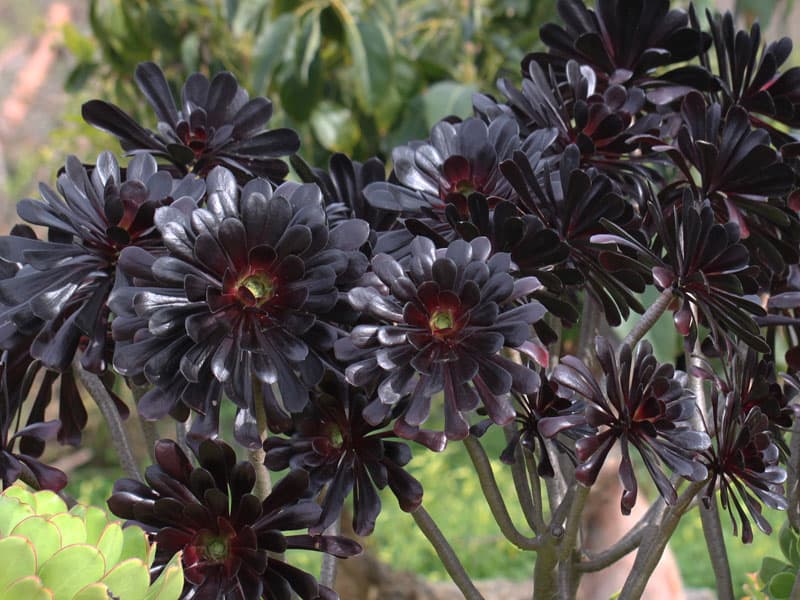
For those who appreciate rich colors, the Aeonium arboreum var. atropurpureum cv. Schwarzkopf (Zwartkop) is a popular choice. Known as the black rose, this branching succulent shrub boasts magnificent black-purple leaf rosettes that turn even darker with exposure to sunlight. It’s truly extraordinary! In late spring, golden pyramids of flowers appear.
Aeonium arboreum var. atropurpureum
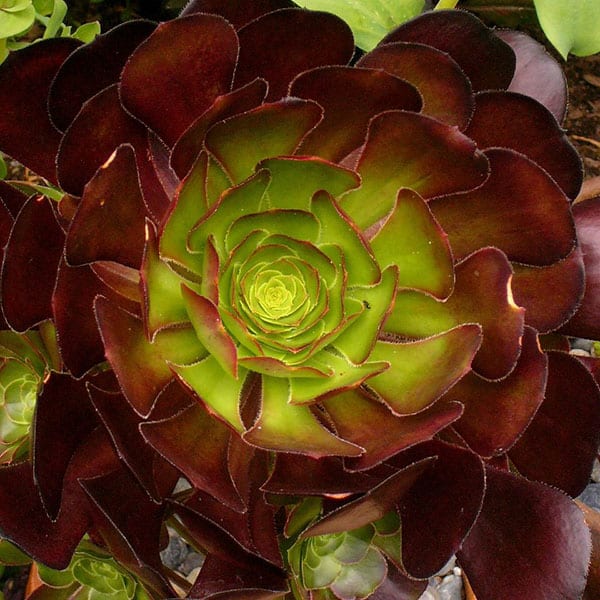
If you’re looking to add a touch of mystery to your garden, consider Aeonium arboreum var. atropurpureum, a branching succulent shrub with almost black-purple leaf rosettes. This unique plant reacts to sunlight, becoming darker with increased exposure. Its fleshy leaves feel surprisingly similar to plastic, making it a truly extraordinary addition to your succulent collection. In the late spring, it produces stunning golden pyramids of flowers.
Aeonium arboreum var. holochrysum
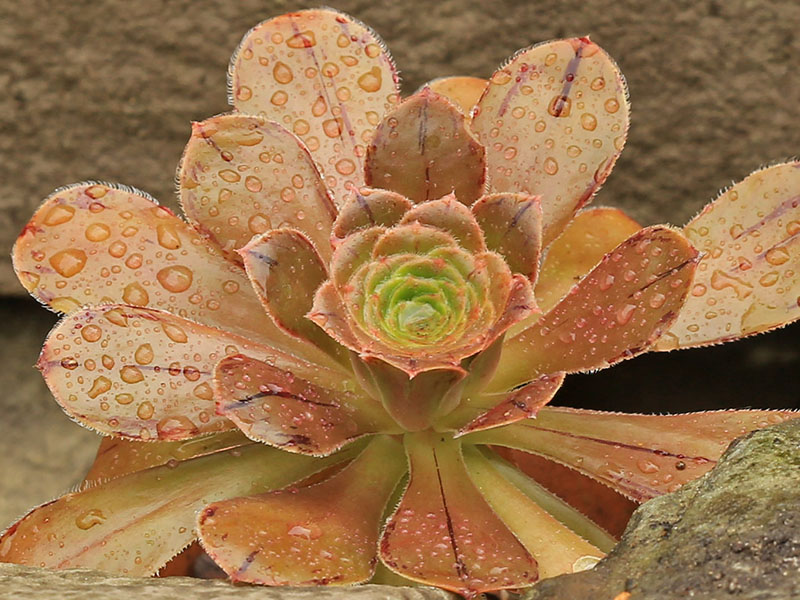
Let’s explore more varieties. Aeonium arboreum var. holochrysum is a branching succulent that can grow up to 3 feet or more. Native to the Canary Islands, this variety showcases reddish-brown leaves under strong sunlight. Its robust growth and unique foliage make it a standout choice for succulent enthusiasts.
Aeonium arboreum var. luteovariegatum
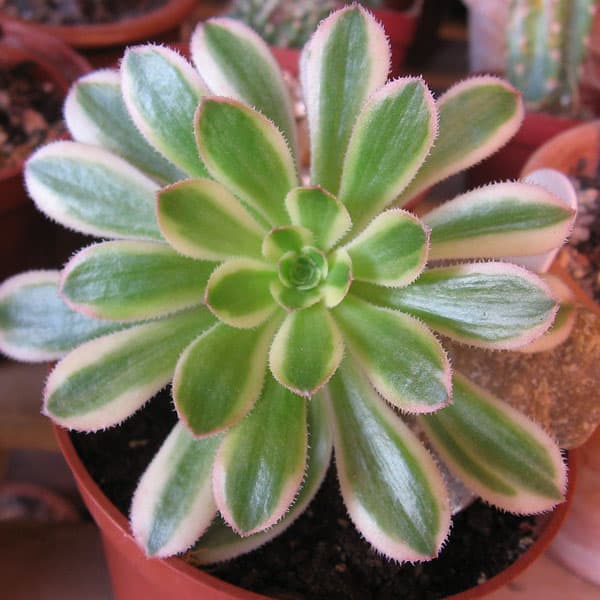
If you’re looking for a visually striking succulent, Aeonium arboreum var. luteovariegatum is the perfect choice. This winter-growing plant forms large rosettes of variegated green and white leaves with vibrant coppery red margins. These stunning rosettes are usually connected to stalks that can grow up to 18 inches tall.
Aeonium arboreum var. rubrolineatum
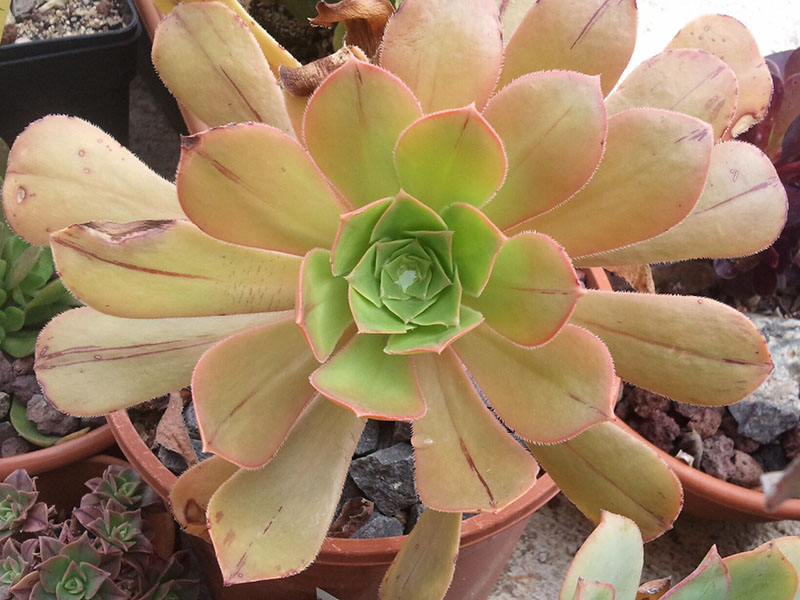
Another fascinating variety is Aeonium arboreum var. rubrolineatum, a nursery cultivar obtained from the species Aeonium arboreum. This variety stands out for its interesting leaf color transformation. While the leaves are green during winter, they turn yellow-orange in the summer, with red-brownish stripes appearing. It’s a delightful display of nature’s ever-changing beauty.
Aeonium aureum
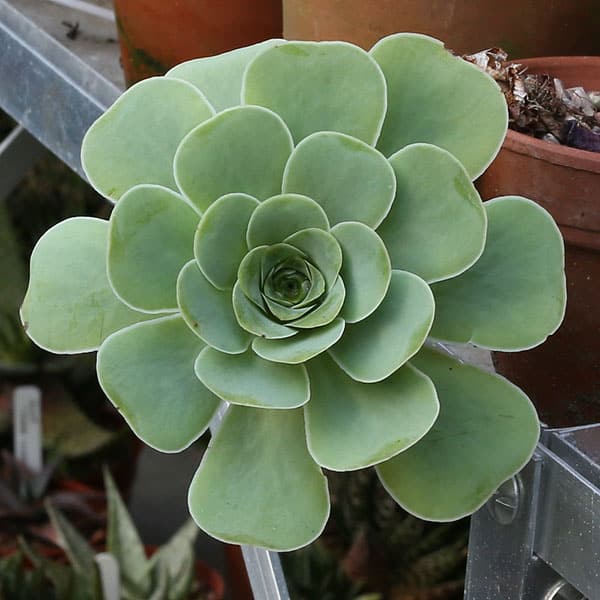
Now, let’s talk about Aeonium aureum, also known as Greenovia aurea. This perennial succulent forms a dwarf clump that reaches a height between 12 and 18 inches. Its cup-shaped rosettes of rounded and spathulate leaves have a gray-green velvet appearance, covered with a bluish-green waxy layer. During spring, Aeonium aureum blesses us with deep yellow flowers.
Aeonium balsamiferum
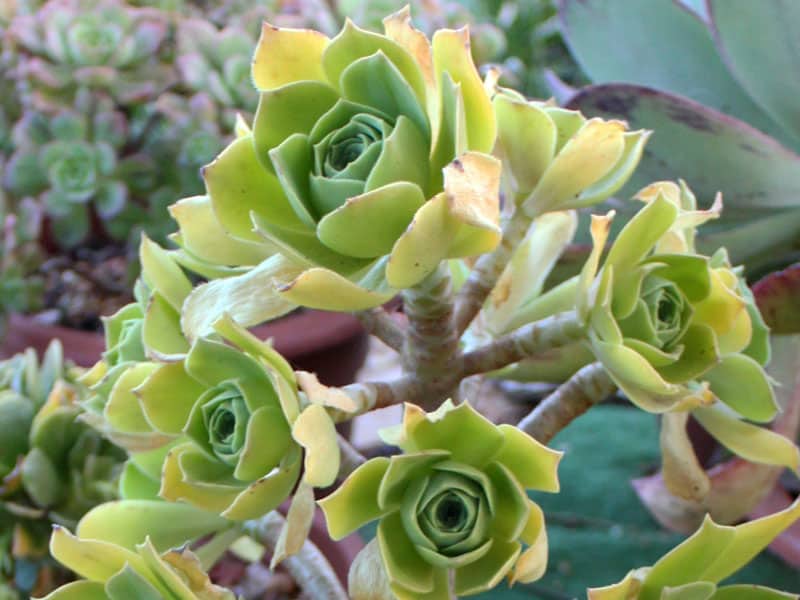
Moving on, we have Aeonium balsamiferum, a unique shrub with several rosettes of sticky, bright green leaves. Each rosette has a diameter of about 8 inches and grows on a wooden stem. The stems cluster together, giving the plant the appearance of a bush. When in bloom, it graces us with cheerful yellow flowers, adding a touch of vibrancy to any garden.
Aeonium canariense
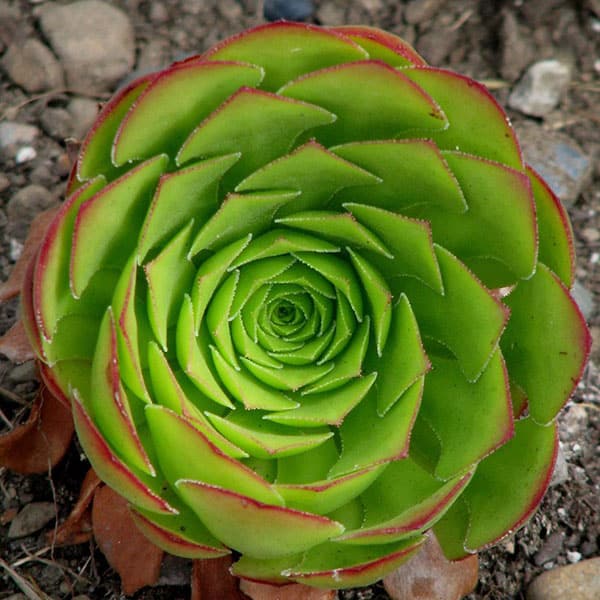
Let’s discover the impressive Aeonium canariense, also known as the Canary Island Aeonium. This evergreen succulent features large velvety rosettes, measuring between 6 to 12 inches across, with fleshy leaves. When grown in part shade, the leaves have a fresh green color, but when exposed to the sun, they develop a reddish-pink tinge, making for a captivating visual display.
Aeonium canariense var. palmense
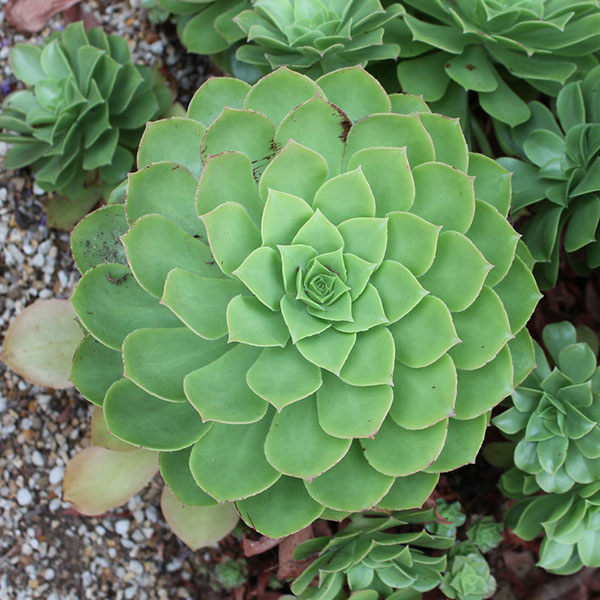
If you seek something rare, you may stumble upon Aeonium canariense var. palmense. This variety, native to La Palma, thrives in shady and moist slopes. It can tolerate wetter and shadier spots in your garden, but it also performs well in full sun. With bowl-shaped rosettes measuring up to 16 inches in diameter, this Aeonium commands attention.
Aeonium canariense var. subplanum
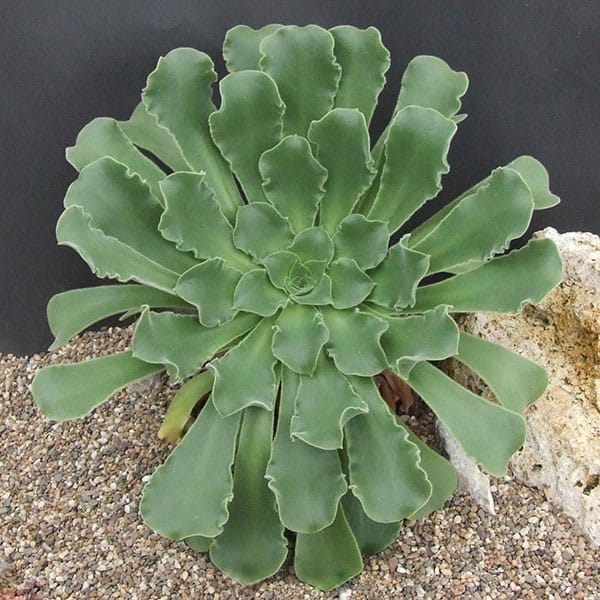
For a petite succulent that still makes a statement, consider Aeonium canariense var. subplanum. This Aeonium offshoots to form a small shrub, standing around 12-20 inches tall. Its slim light green leaves may display a pink tinge on the outer edge in colder or drier conditions. In spring, large yellow flower offshoots bloom, enriching the plant’s visual appeal.
Aeonium canariense var. virgineum
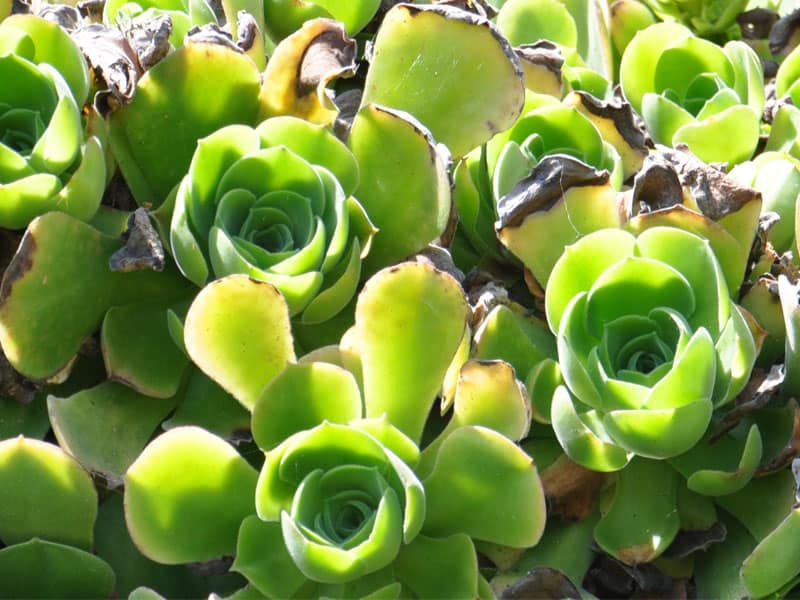
Are you in need of a medium-sized Aeonium that catches the eye? Look no further than Aeonium canariense var. virgineum. This stunning variety is known for its soft velvety appearance and abundant mounds of bright green rosettes covered in small hairs. In bright sun, these rosettes can form a red edge adding to their dramatic appearance.
Aeonium x casanovense
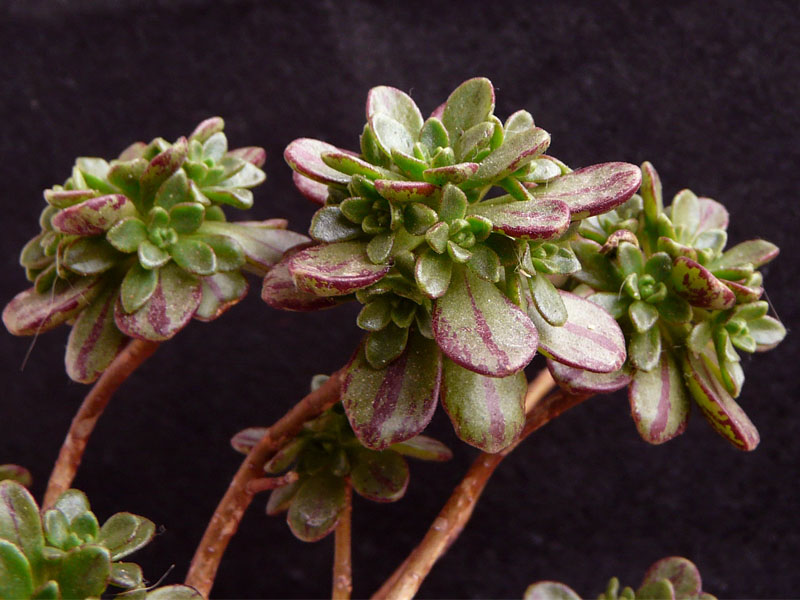
Let’s explore some intriguing hybrids as well. Aeonium x casanovense is a captivating hybrid between Aeonium spathulatum and Aeonium sedifolium
Aeonium x castellodecorum
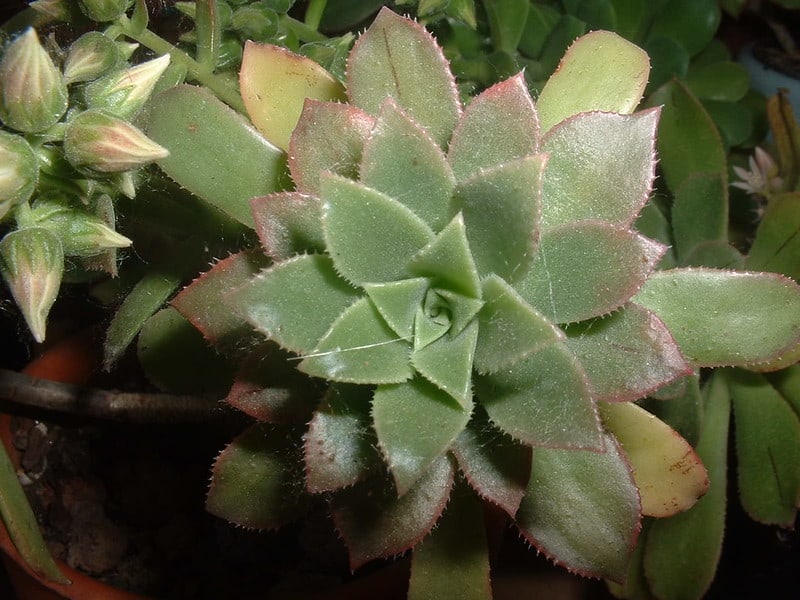
Meanwhile, Aeonium x castellodecorum is a hybrid born from the union of Aeonium castello-paivae and Aeonium decorum. These unique hybrids boast characteristics that make them stand out among other Aeonium varieties.
Aeonium castello-paivae
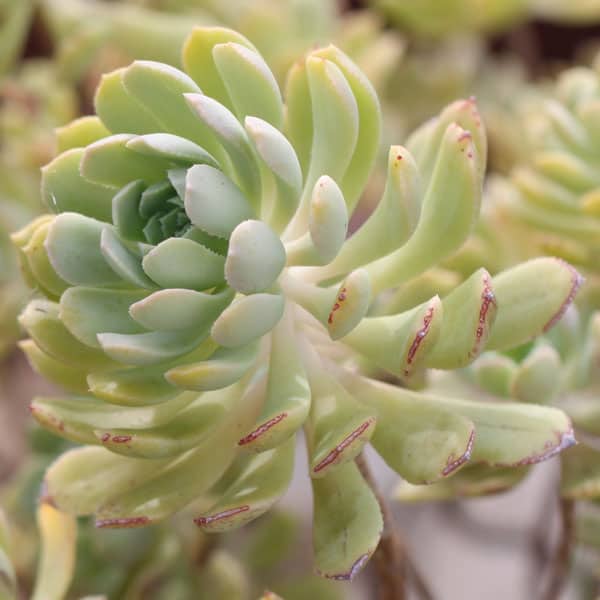
Speaking of hybrids, let’s delve into Aeonium castello-paivae, also known as Aeonium Suncup. This evergreen succulent delights us with variegated rosettes in pale green splashed with creamy white. They form compact clumps around 12 inches tall and wide. Don’t be surprised if you find this variety being sold under different names such as Aeonium cv. Abbey Brook or even Aeonium torulosum (an invalid name). This Aeonium variety may surprise you as each offset can be wonderfully unique.
Aeonium ciliatum
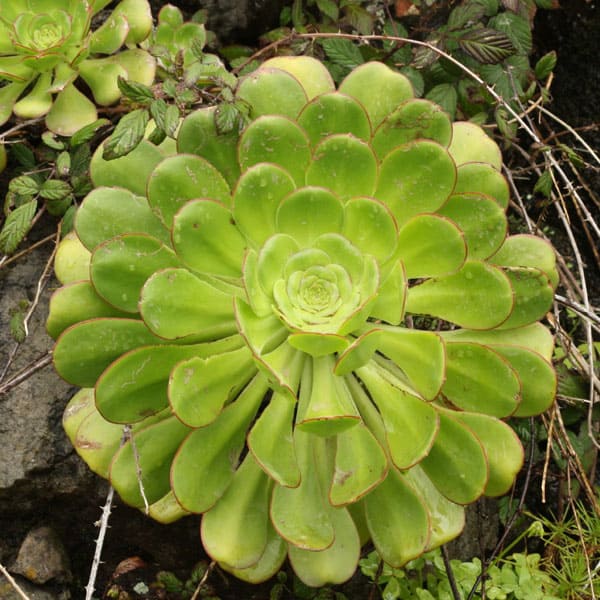
If you’re looking for a taller succulent, Aeonium ciliatum might be just what you need. This shrubby succulent can reach heights of 4 to 6 feet, with large terminal rosettes measuring about 1 foot in width. Its gray-green leaves have reddish margins, giving it an alluring touch. In early summer, a dome-shaped inflorescence emerges, showcasing delicate cream flowers that rise above the foliage.
Aeonium cuneatum
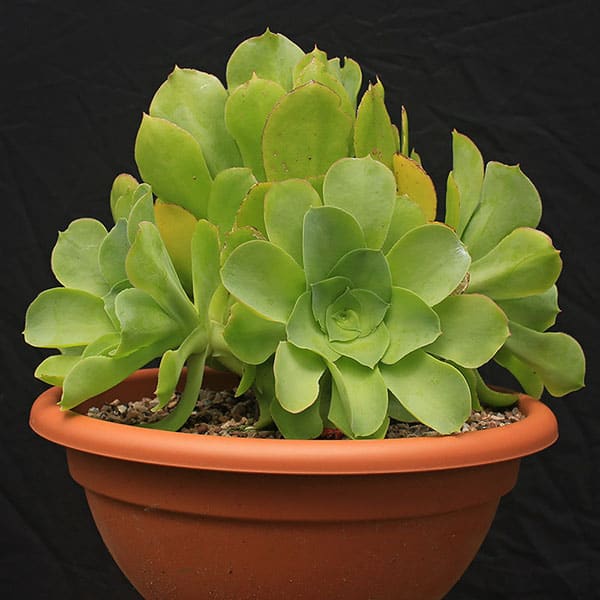
Let’s not forget Aeonium cuneatum, named after its wedge-shaped leaves. This Aeonium lacks a stem and forms large, cup-like rosettes. The light green leaves have a smooth surface with a shining grey appearance. It readily forms new plant offshoots, creating a sizeable and visually appealing cluster. Keep an eye out for its lovely yellow flowers and the fact that it can self-seed.
Aeonium cv ‘Sunburst’
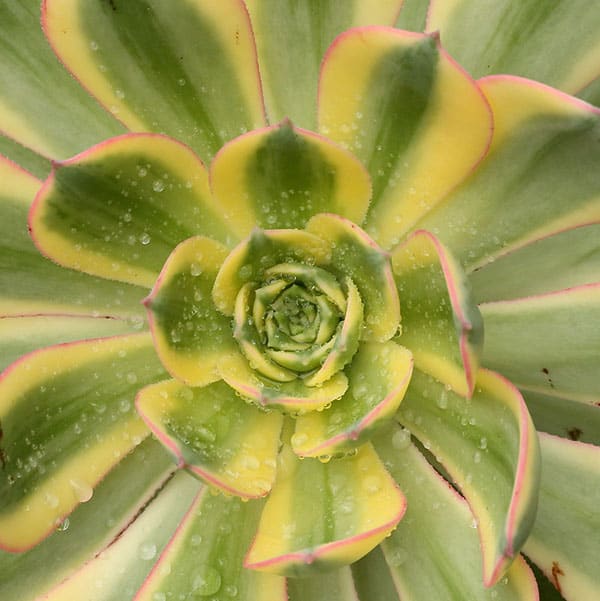
Next, we have Aeonium cv ‘Sunburst’, a stunning variegated succulent that will surely catch your attention. This branching succulent impresses with its white and green leaves, accented by pink edges that turn red under full sun. Watch for white flowers in the summer. It is monocarpic, meaning that after it flowers, the main plant will die.
Aeonium davidbramwellii
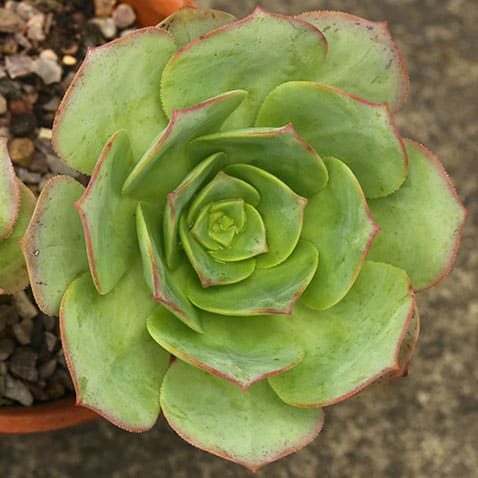
Let’s look at Aeonium davidbramwellii, a branching succulent that forms large rosettes. These rosettes can reach up to 12 inches in diameter and are characterized by their dark green leaves with reddish-brown margins. Aeonium davidbramwellii blooms with clusters of star-shaped white-reddish flowers, lending a touch of elegance to its appearance.
Aeonium decorum
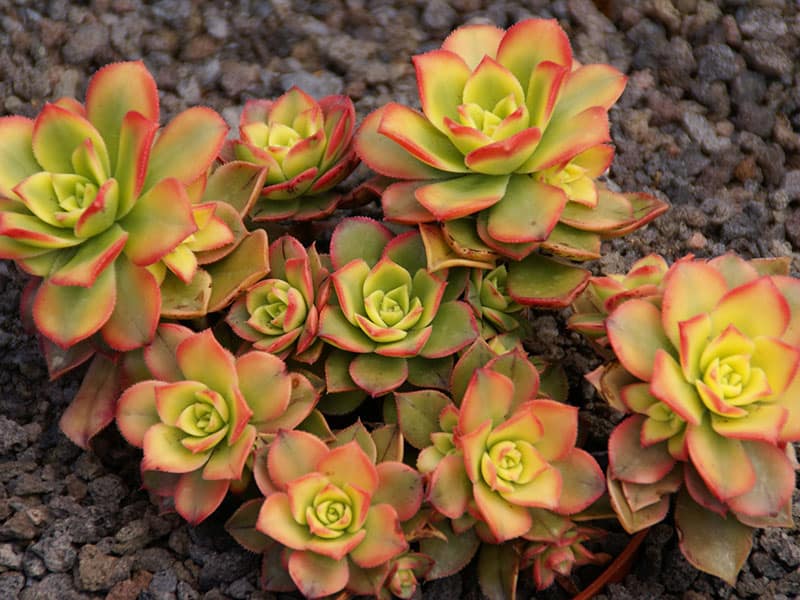
Moving on to Aeonium decorum, also known as Green Pinwheel, it is a small succulent shrub that can reach a height of up to 2 feet. This evergreen perennial forms low clumps of small rosettes with dark green to yellowish-green leaves. The thick, ascending, or pendent branches hold these rosettes, adding an interesting visual texture to the plant.
Aeonium diplocyclum
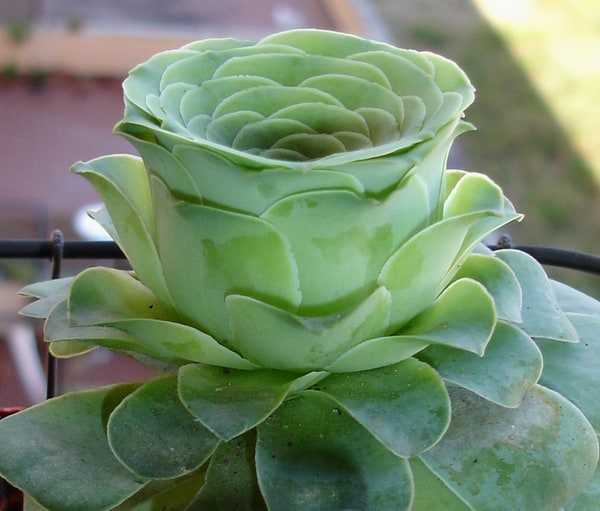
Now let’s explore Aeonium diplocyclum, an evergreen perennial succulent. This unique plant grows up to 2.4 inches tall and features rosettes that can measure up to 8 inches in diameter. When exposed to full sun, the rosettes take on a light yellowish-green hue and develop a fine white powder on their surface. During the summer dormancy period, the rosettes close like cups and become covered with beige-red, dry-leaf sheaths. It’s also important to note that Aeonium diplocyclum remains solitary and does not produce any offsets.
Aeonium dodrantale
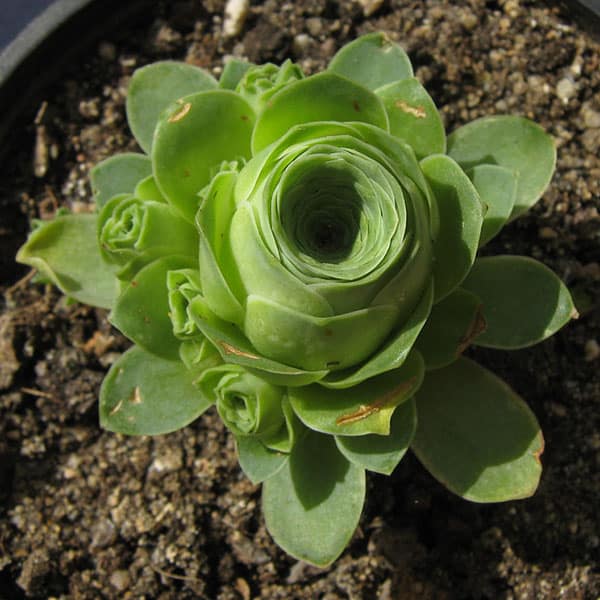
Next, let’s meet Aeonium dodrantale, also known as Greenovia dodrantalis. This succulent perennial grows up to 2.4 inches tall and produces rosettes on stalks that can reach up to 3.2 inches long. The cup- or urn-shaped rosettes can reach a diameter of 2.4 inches and have densely packed leaves, even when tightly closed during the dry season. The blue-green leaves have a waxy surface and measure up to 1.4 inches in length and 0.6 inches in width. In spring, yellow flowers bloom on tall stalks that rise up to 10 inches above the foliage, adding a lovely touch to this charming succulent.
Aeonium glandulosum
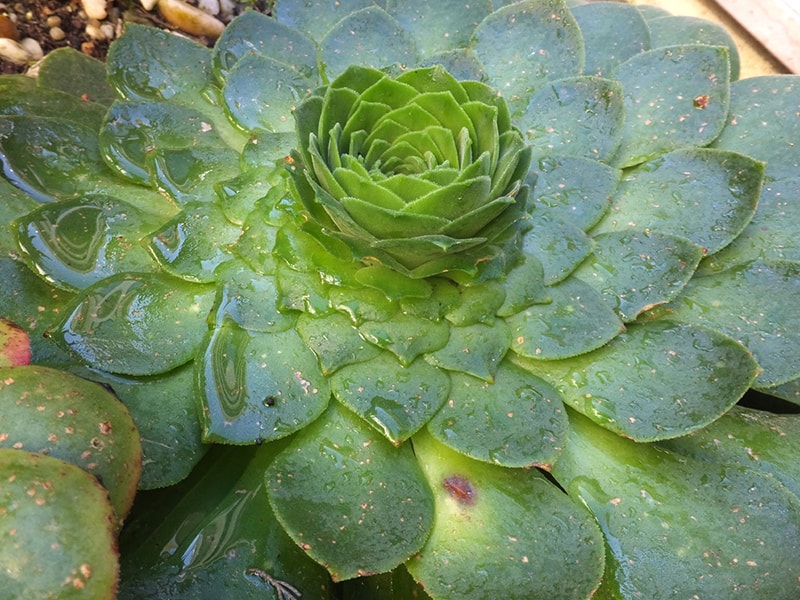
Let’s move on to Aeonium glandulosum, a succulent plant with succulent, obvate to rhomboidal-spatulate leaves that can grow up to 4 inches long. This biennial to perennial plant forms dense rosettes, with large, ramose panicles of flowers emerging from the center. The flowers create a striking display of beauty, adding a vibrant touch to the overall appearance of the plant.
Aeonium glutinosum
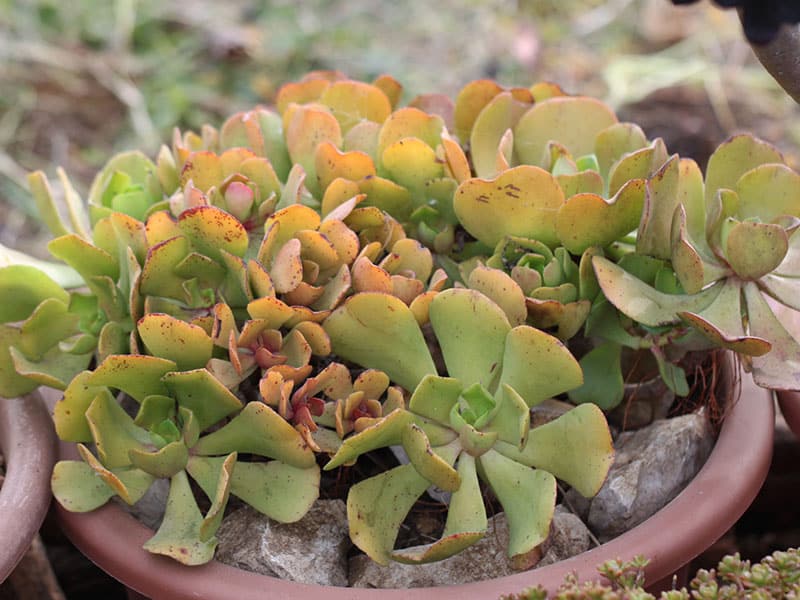
As we explore further, we come across Aeonium glutinosum, a species native to Madeira. This plant possesses a natural sticky substance on its leaves and stem. When exposed to good light, the leaves may produce a red tinge, making this variety particularly attractive.
Aeonium gomerense
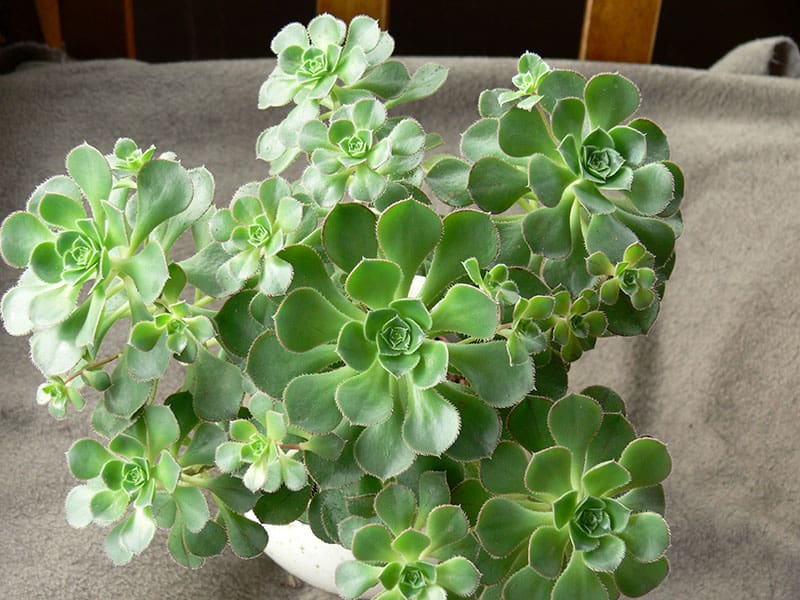
Let’s now discover Aeonium gomerense, a branching succulent subshrub from the Canary Islands. It creates a flat and open rosette of green leaves with a reddish margin. When grown outdoors in Mediterranean climates, it can grow stems over 4 feet tall, and the rosette can reach a diameter of 11 inches. This variety is a true visual delight.
Aeonium goochiae
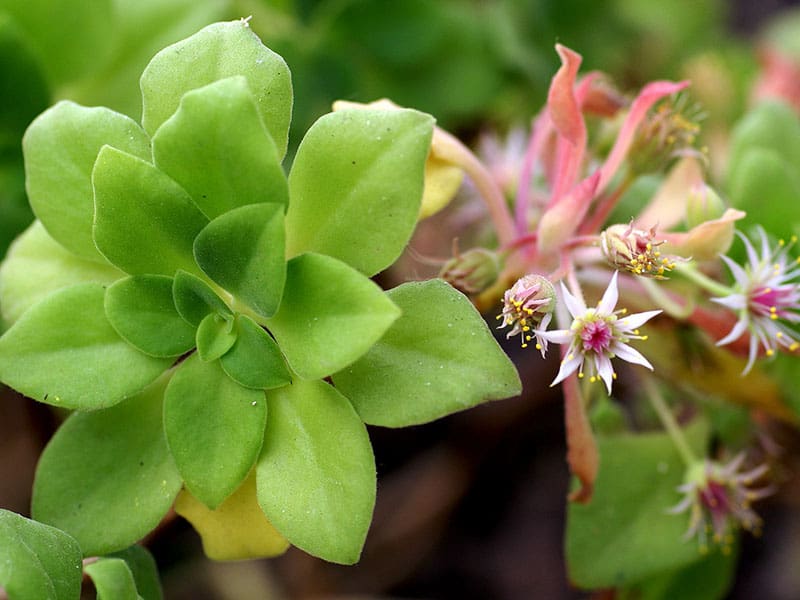
Aeonium goochiae is a charming small succulent tree that grows up to 12 inches in length. It features small rosettes in the shape of a diamond with light green to dark reddish leaves. The tree blooms in mid-spring with white to pale pink flowers, adding a touch of elegance to its overall appearance.
Aeonium gorgoneum
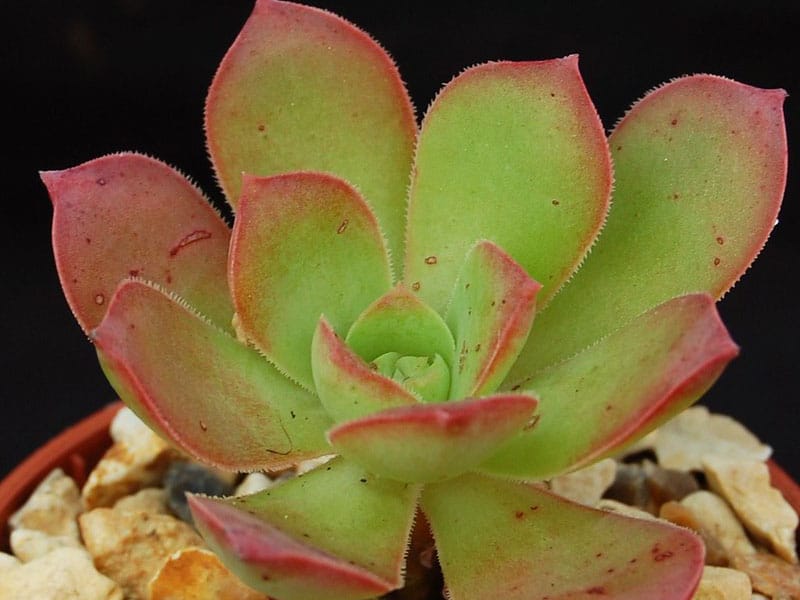
Let’s now meet Aeonium gorgoneum, a species that is rarely found in cultivation. Unlike most Aeonium varieties, it does not originate from the Canary Islands but rather from the tropical Cape Verde Islands. Aeonium gorgoneum features attractive light green-yellow leaves that may develop a pink tinge in bright light.
Aeonium hawbicum
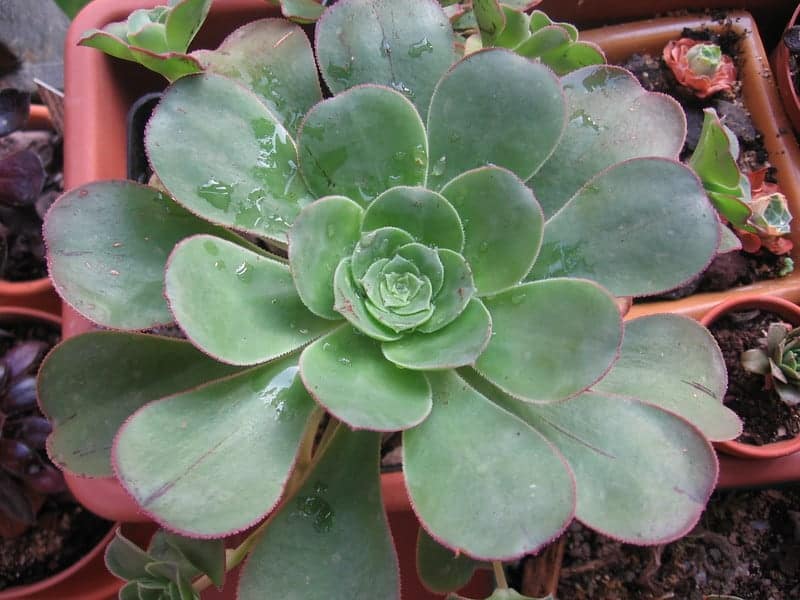
Moving on to Aeonium hawbicum, it is a beautiful hybrid between Aeonium haworthii and Aeonium urbicum, showcasing the finest qualities of both parent plants.
Aeonium haworthii
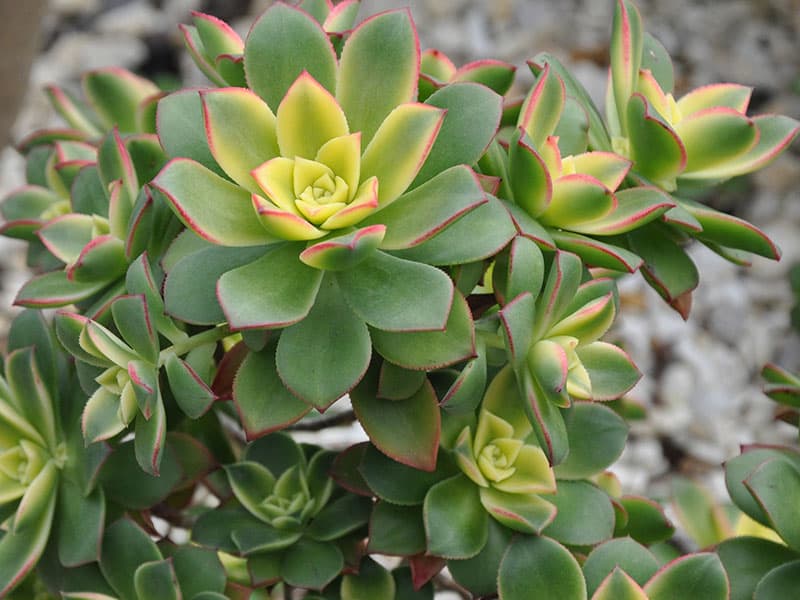
Aeonium haworthii, also known as Pinwheel Aeonium, is a winter-growing succulent shrub that can reach a height of up to 2 feet. It forms rosettes of bluish-green leaves, which are keeled on the lower surface and often tinged with red along the ciliate margins. The pale yellow to nearly white flowers bloom above the foliage in late spring, occasionally displaying a charming pink tinge.
Aeonium hierrense
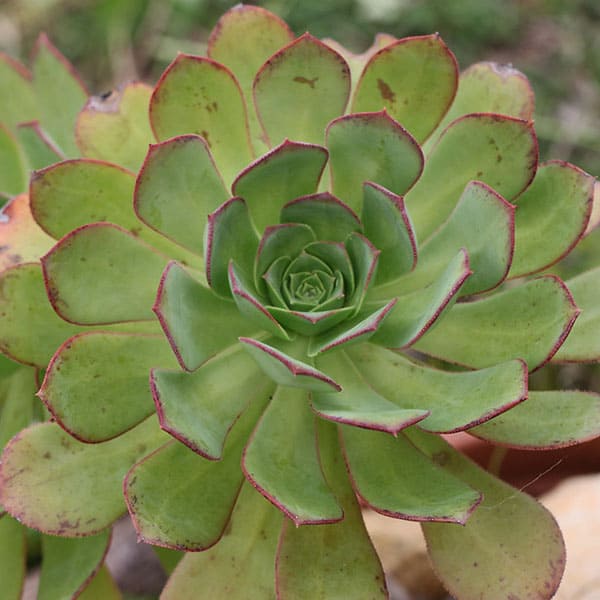
Let’s explore Aeonium hierrense, a very rare succulent plant with impressive rosettes that can reach a height of up to 3 feet or even more. These rosettes have beautiful glaucous, bluish-green leaves with red patterns, especially when exposed to full sun. When in bloom, Aeonium hierrense produces thousands of exquisite white to pale rose flowers.
Aeonium x holospathulatum
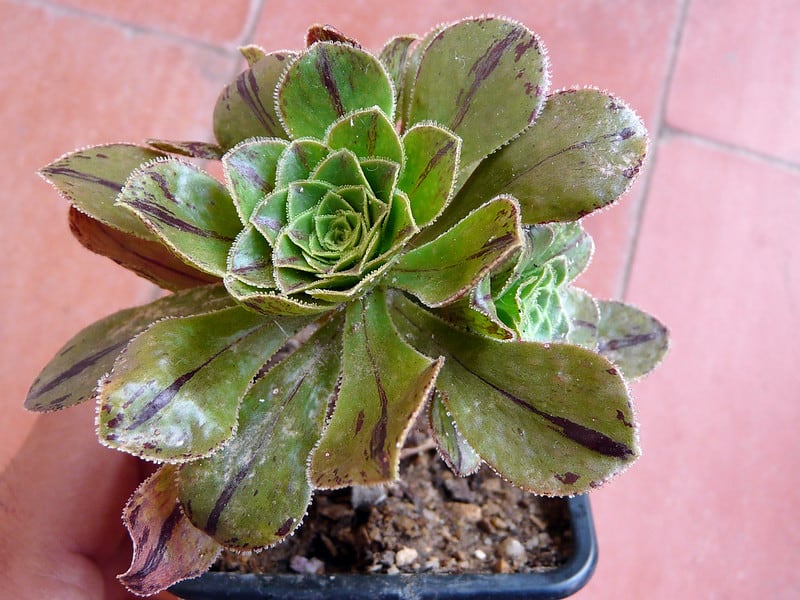
Aeonium x holospathulatum is a beautiful hybrid between Aeonium rubrolineatum and Aeonium spathulatum. It inherits the best attributes of both parent plants, resulting in a visually stunning succulent with green rosettes adorned with strong red markings.
Aeonium x isorense
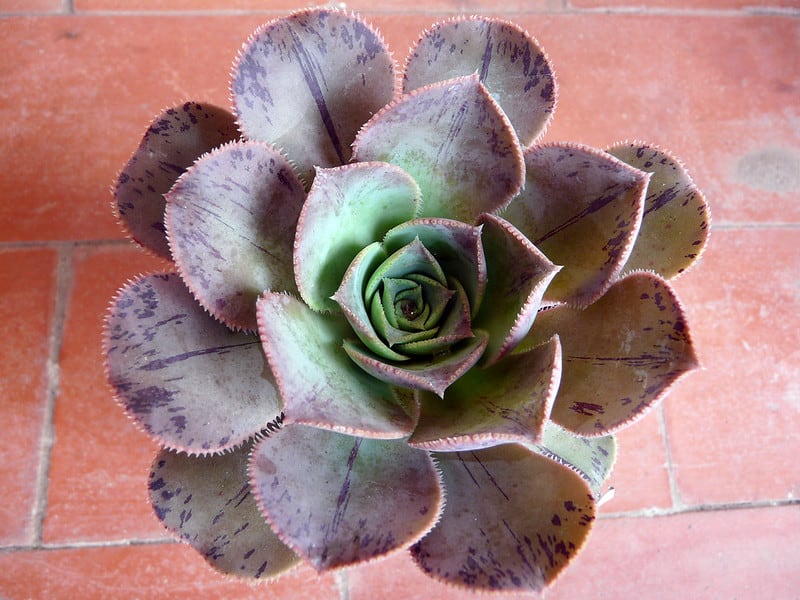
Aeonium x isorense is another intriguing hybrid, this time between Aeonium hierrense and Aeonium holochrysum. This combination creates a unique succulent with its own distinct features.
Aeonium ‘Jolly Green’
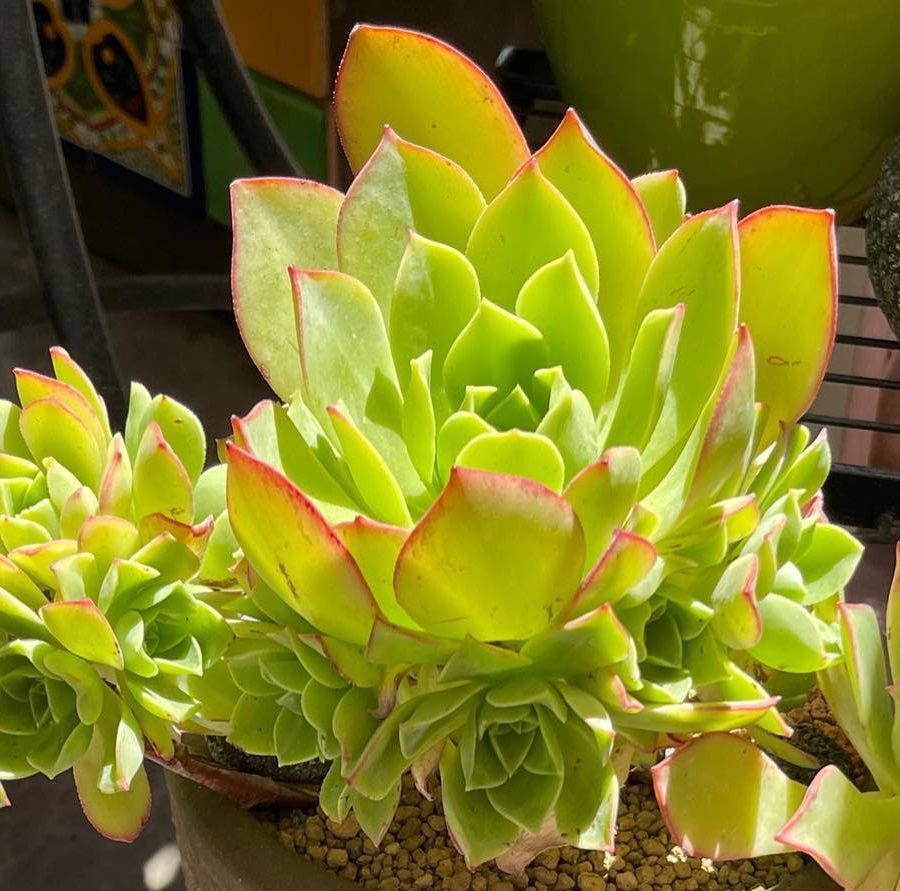
Aeonium ‘Jolly Green’ is a captivating succulent of Canary Islands origin. It grows to a height of approximately 12 inches and has a unique spreading growth pattern, adding visual interest to any garden.
Aeonium korneliuslemsii
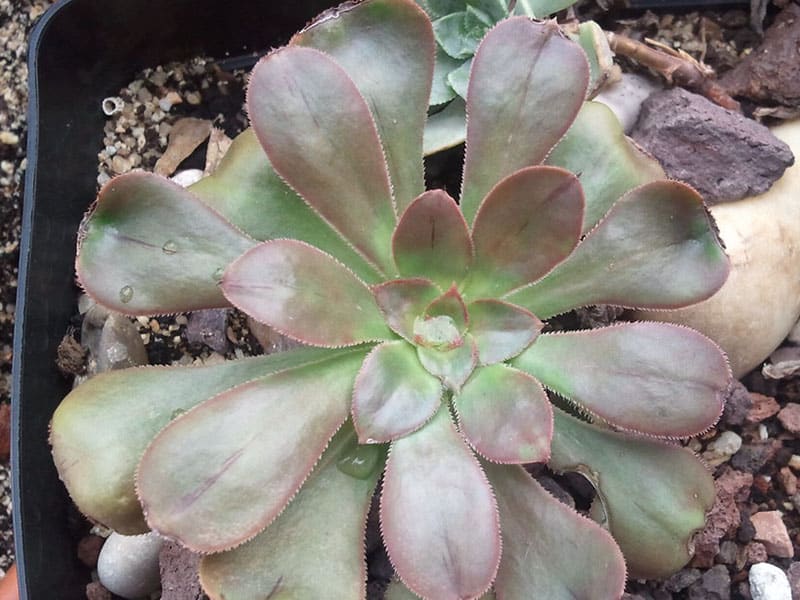
Now let’s discover Aeonium korneliuslemsii, a species native to Morocco. This succulent plant grows upright and slightly branches out, reaching over 3 feet in height. It also produces offsets from the base, making it a visually appealing addition to your garden.
Aeonium lancerottense

Moving forward, we have Aeonium lancerottense, an evergreen shrub densely branched with rosettes of soft, green, smooth leaves. These rosettes can have a diameter of up to 6 inches and are held densely on thick stems, forming a striking circular shrub that can reach a width of up to 3 feet. In the summer, Aeonium lancerottense produces large floral cones with numerous starry rose flowers that rise up to 2 feet above the leaves on strong stalks.
Aeonium x laxiflorum
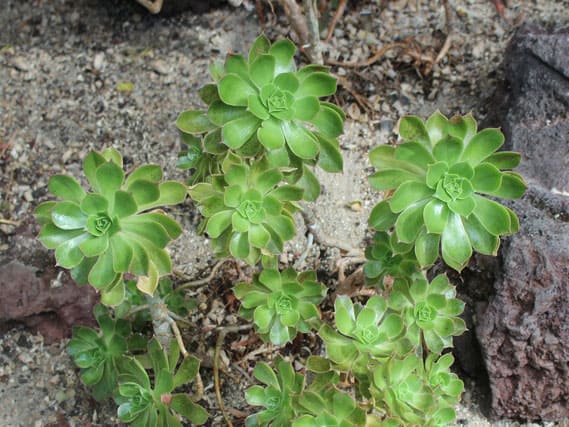
Let’s now discuss Aeonium x laxiflorum, a lovely hybrid between Aeonium decorum and Aeonium diplocyclum. This hybrid takes on the best qualities of both parents, creating a magnificent succulent with green rosettes.
Aeonium leucoblepharum
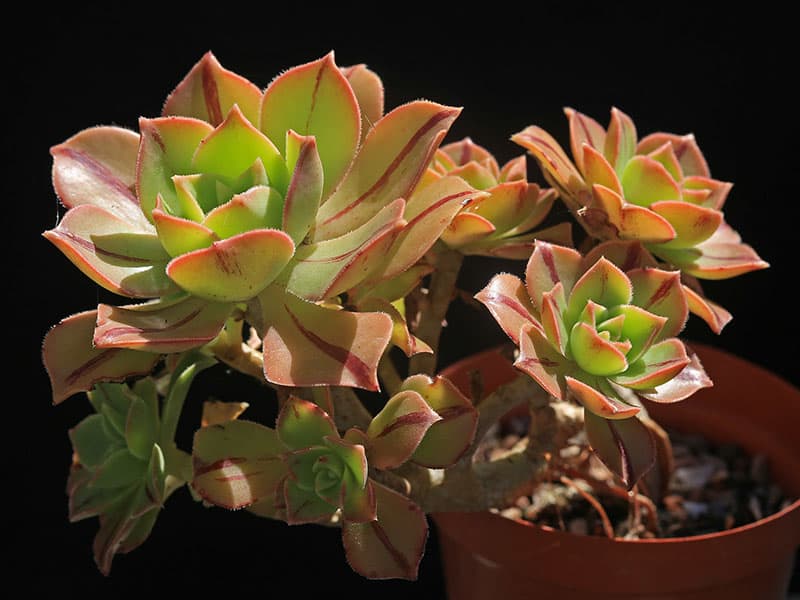
Aeonium leucoblepharum is an evergreen succulent subshrub that can reach heights of around 30-32 inches. Each branch bears a rosette of pointed, green-reddish-pinkish leaves, which can be about 2 inches long and up to 0.6 inches wide. In the central part of each leaf, there is a beautiful red stripe, adding an eye-catching accent. The inflorescence is a raceme of yellow flowers, typically with 7-10 petals.
Aeonium x lidii
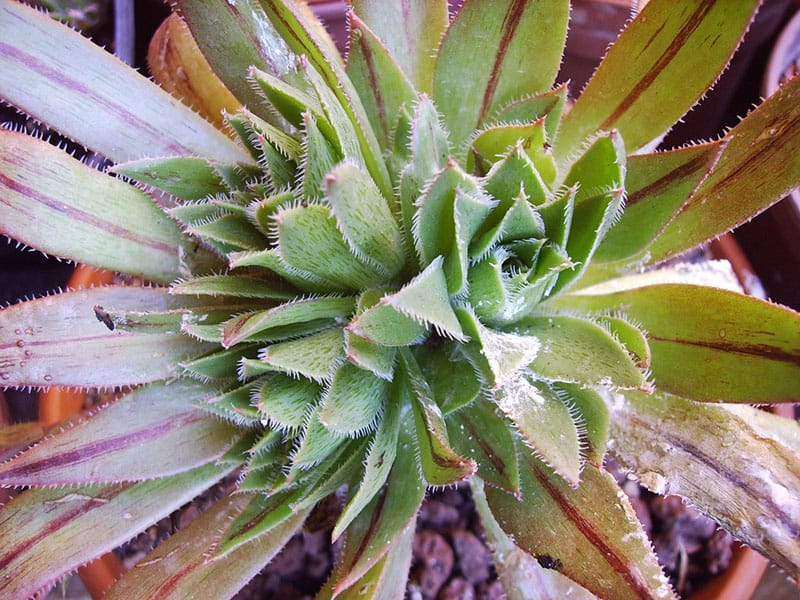
Aeonium x lidii is a delightful hybrid between Aeonium percarneum and Aeonium simsii. It combines the best characteristics of its parent plants, resulting in a visually stunning succulent that will make a beautiful addition to your garden.
Aeonium lindleyi
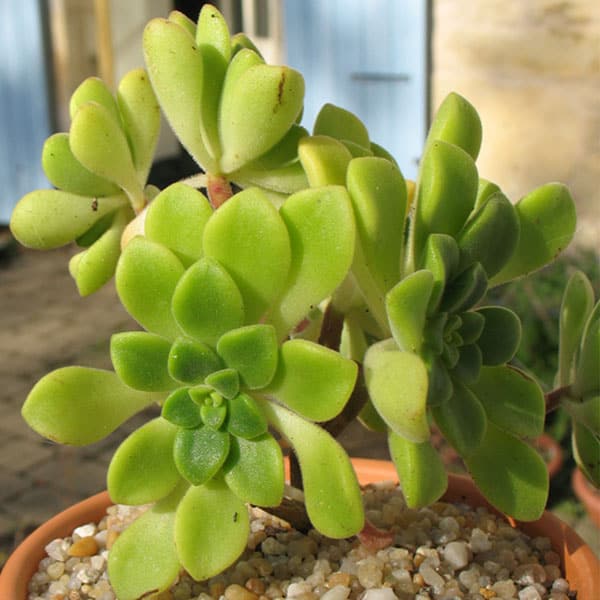
Aeonium lindleyi is a small perennial succulent sub-shrub that forms small bushes about 8-20 inches high (depending on the variety). Numerous branches carry small rosettes, which can be up to 6 inches in diameter. The leaves are succulent, covered with hair, giving them a soft and velvety texture. The flowers, which are yellow, add a cheerful touch to this lovely plant.
Aeonium x loartei
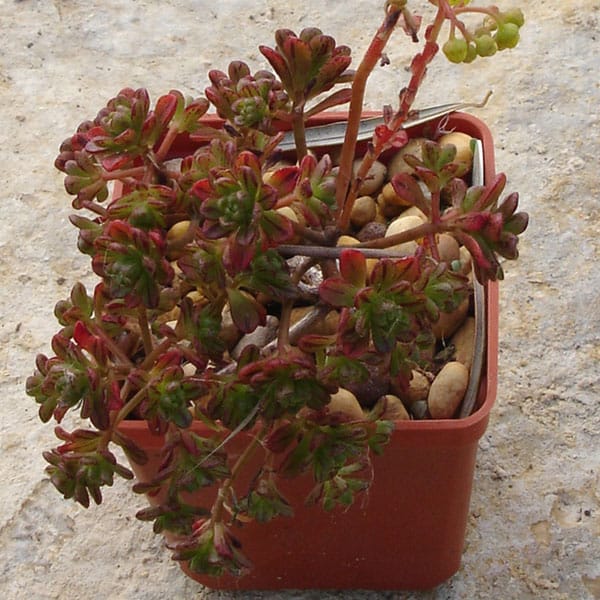
Aeonium x loartei, also known as Aeonium arnoldii, is a compact hybrid with green rosettes adorned with strong red markings. It is a cross between Aeonium sedifolium and Aeonium spathulatum, resulting in a visually striking and unique succulent.
Aeonium mascaense
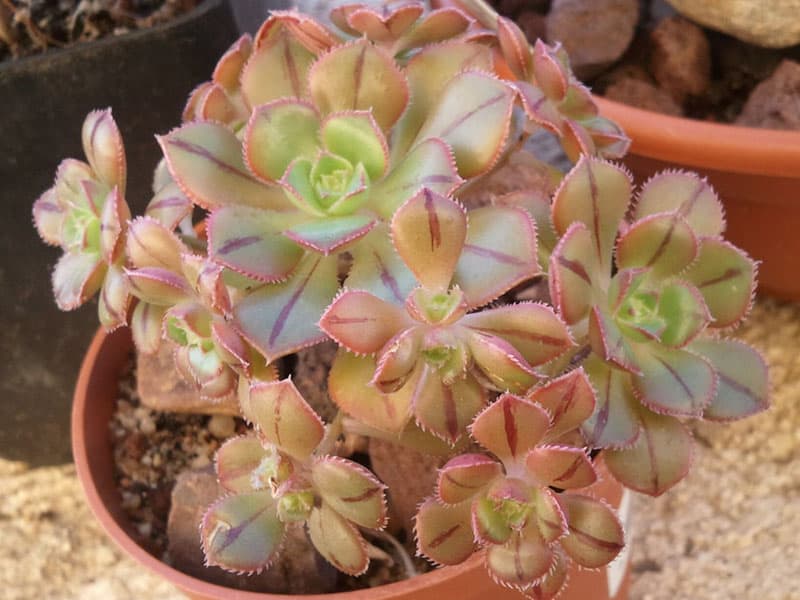
Aeonium mascaense is a small succulent plant with rosettes that form a limestone-green mound of up to 2 feet in length and over 18 inches in height. The thick leaves are pinchy and can feature a strong red stripe down the middle. The greenish flowers, arranged in clusters, add a delightful touch to this charming succulent.
Aeonium nobile
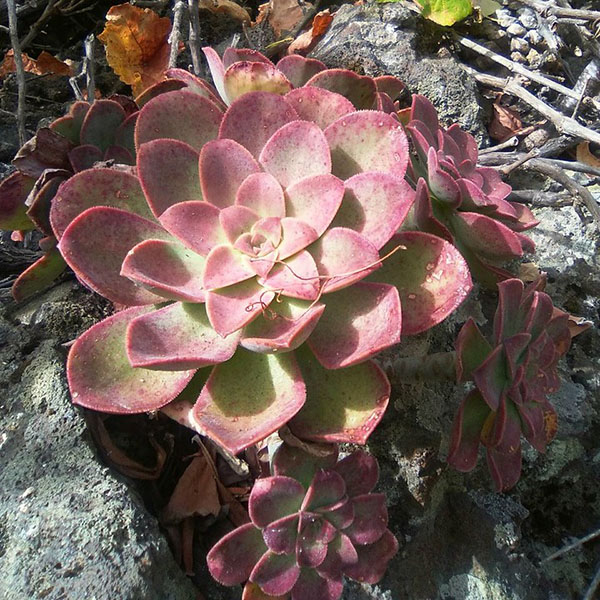
Now let’s discuss Aeonium nobile, a succulent plant that forms large rosettes measuring up to 15 inches in diameter. Its thick, fleshy leaves are yellowish-green, occasionally variegated with reddish or brownish tones along the margins. After several years, the plant matures and produces a large, flattened inflorescence that rises on a red stalk, showcasing a head over 1 foot wide and nearly as tall. This inflorescence is adorned with many small star-shaped red flowers with white anthers, creating a breathtaking display.
Aeonium occidentale
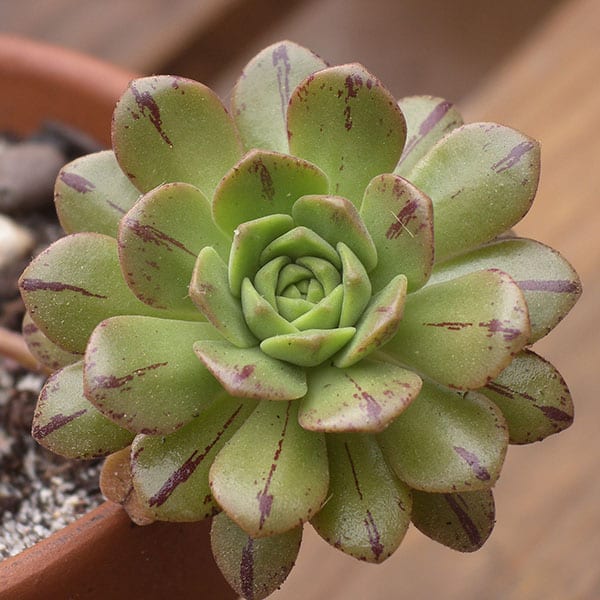
Aeonium percarneum
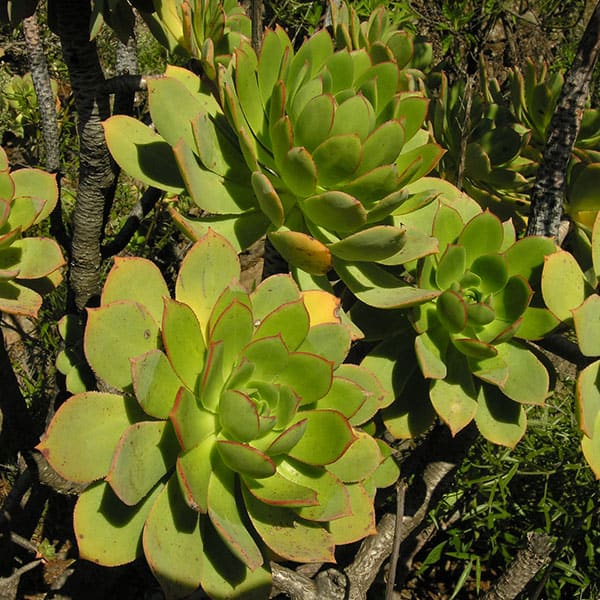
Moving on, we have Aeonium percarneum, a perennial succulent shrub that grows to a height of up to 3.3 feet. It produces rosettes up to 8 inches in diameter, with dark green leaves that often feature reddish variegation along the margins. These leaves can reach up to 4 inches in length and 1.6 inches in width.
Aeonium pseudotabuliforme
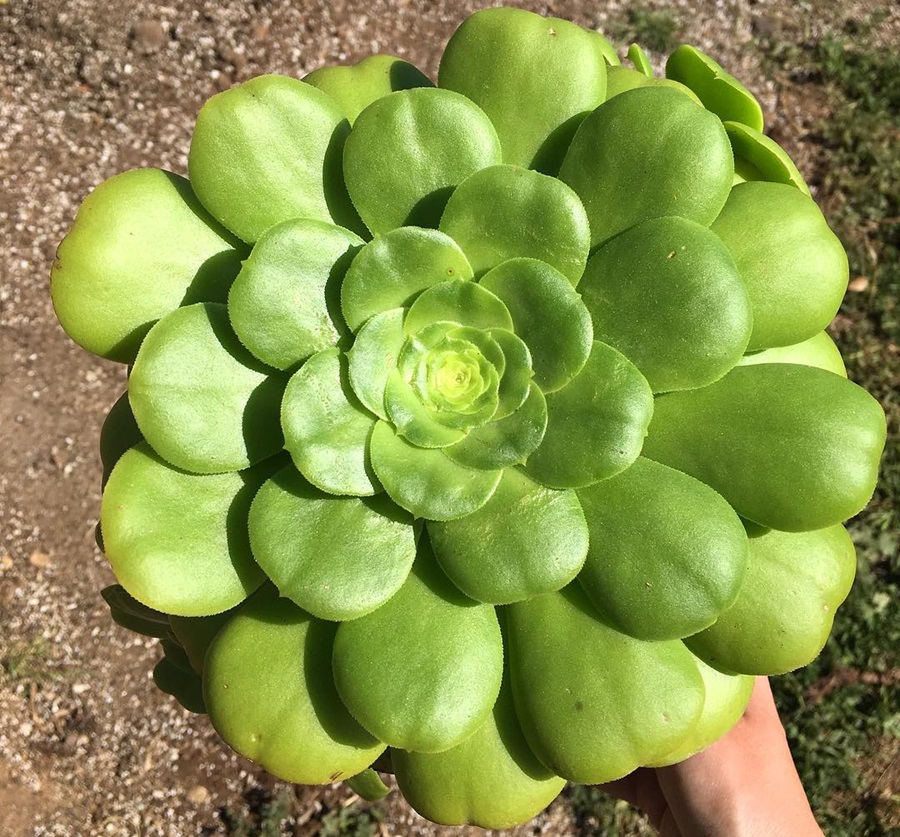
Let’s explore Aeonium pseudotabuliforme, also known as Green Platters, due to its intricate rosette shape resembling a platter. The leaves of this plant are bright green and increase in size towards the exterior, providing a visually interesting display.
Aeonium x robustum
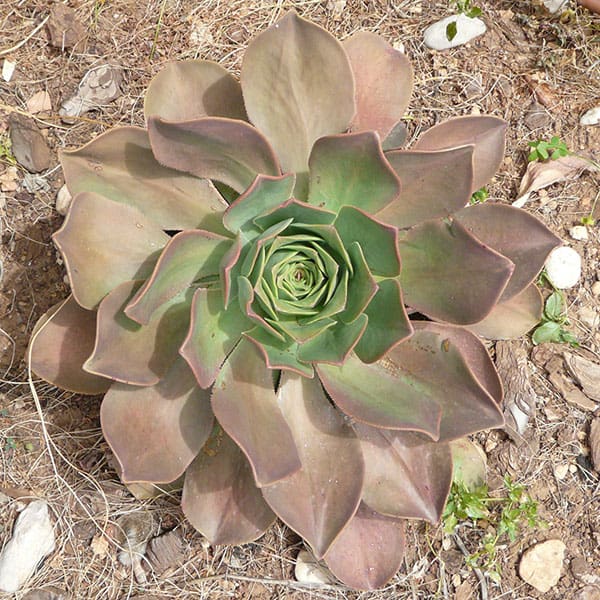
Aeonium x robustum is a robust hybrid between Aeonium davidbramwellii and Aeonium nobile. It showcases a combination of their best qualities, making it a visually striking succulent.
Aeonium x sanchezii
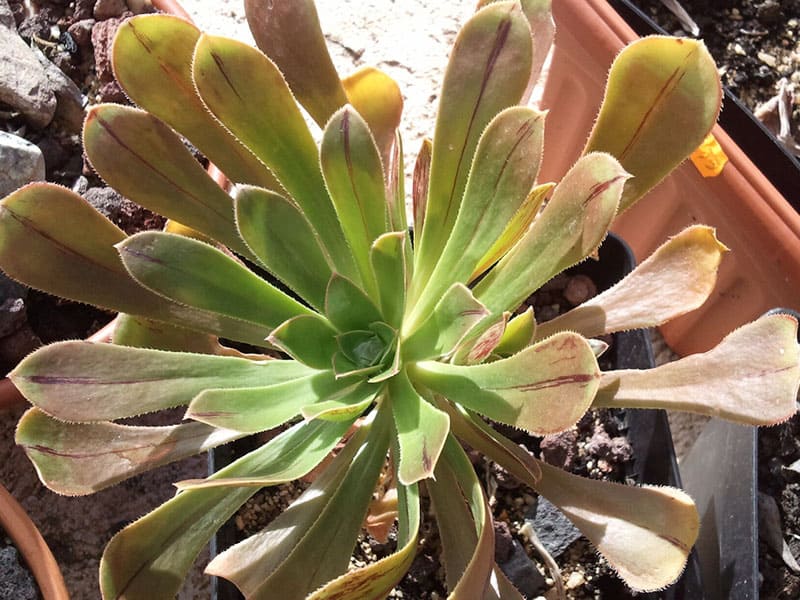
Aeonium x sanchezii is a hybrid between Aeonium rubrolineatum and Aeonium spathulatum. It shares similarities with Aeonium spathulatum but is more sturdy and resilient.
Aeonium saundersii
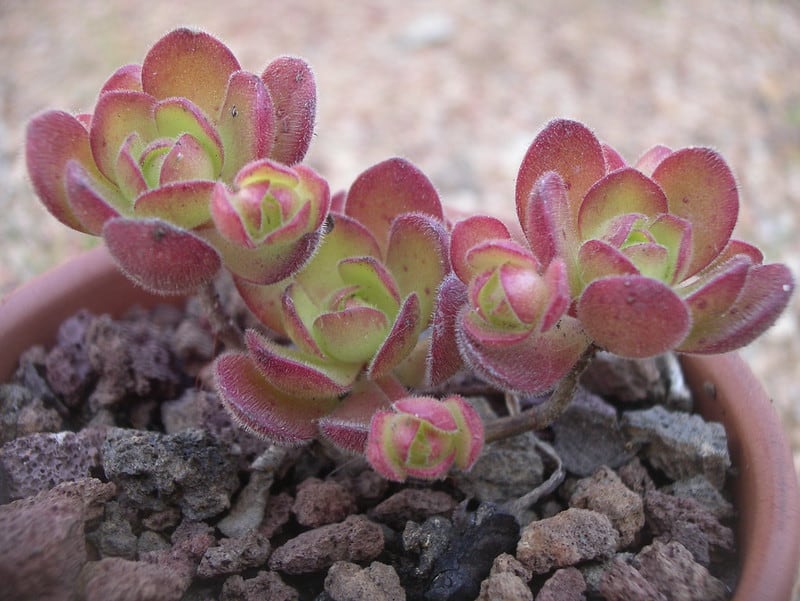
Let’s meet Aeonium saundersii, a succulent plant found growing in small mountainous pockets on the island of Gomera. It forms a short compact structure that readily offsets, with highly succulent hairy leaves that develop a red tinge in strong light.
Aeonium sedifolium
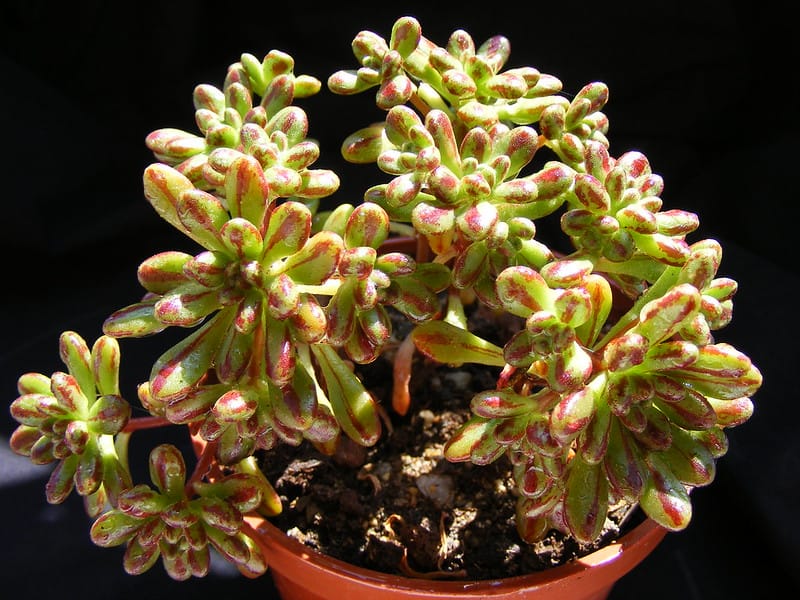
Next, we have Aeonium sedifolium, a small succulent plant with delicate branching stems and small rosettes. These rosettes feature rounded, lime-green leaves, streaked with red stripes that radiate upward. In spring, bright yellow star-shaped flowers grace the plant, adding a touch of cheerfulness.
Aeonium simsii
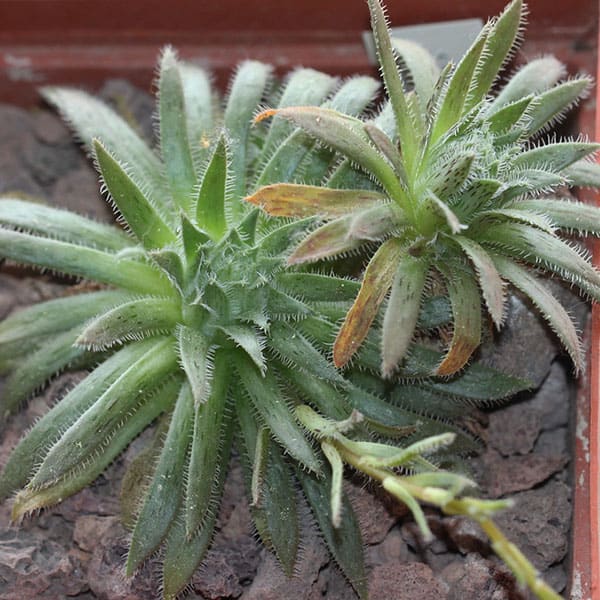
Aeonium simsii is a low-growing succulent shrub with relatively small leaf rosettes, reaching up to 8 inches in height. However, it densely branches out, forming a dense coating of rosettes. Its shiny green leaves have strap-shaped tips. It is similar to larger Aeonium varieties, such as Sempervivum. The leaves feature many dark-green short lines running longitudinally on the lower surface, with a vile-brown line sometimes visible on the upper surface.
Aeonium smithii
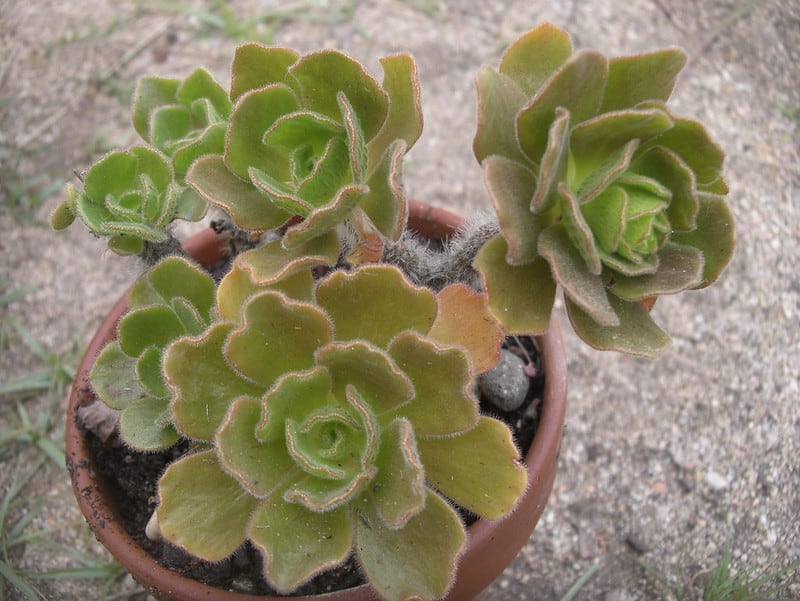
Now let’s discover Aeonium smithii, a perennial deciduous succulent shrublet that can reach a height of up to 2 feet. It stands out with its unique characteristics, including spotted leaves on the underside. After the leaves fall off, a row of stiff hairs remains along the lower edge of the scars. The stem becomes generally hispid (shaggy) with age. The leaves are undulated, deep green with red stripes on both sides, velvety to the touch, and glossy on the upper surface. Aeonium smithii is extremely prolific in blossoms, with yellow flowers adorning the rosettes on stems up to 6 inches tall. These flowers feature usually 10-12 petals, eighteen stamens, and 10-12 pistils.
Aeonium spathulatum
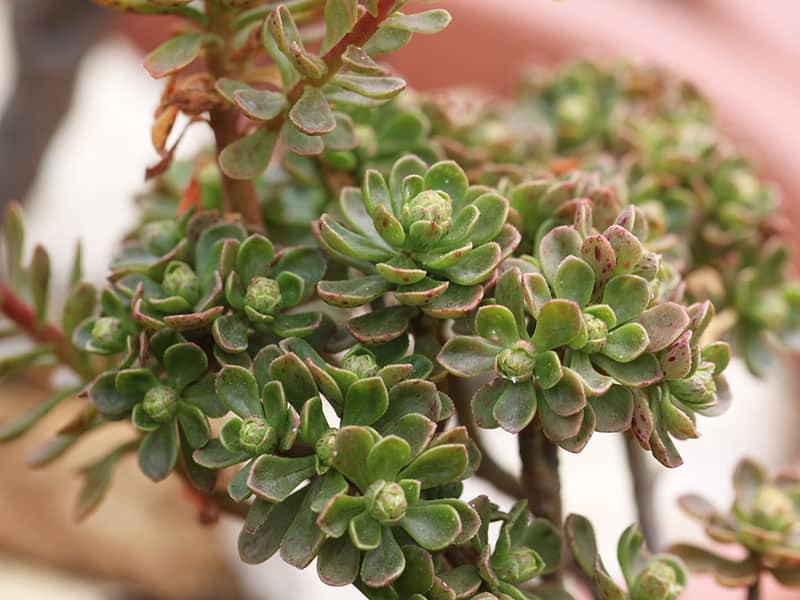
Let’s move on to Aeonium spathulatum, a branching succulent shrub that can reach up to 3 feet (90 cm) in height. Its spoon-shaped leaves measure up to 1.2 inches (3 cm) in length and have a slightly sticky texture. When exposed to strong light, the leaves take on a reddish color. This variety blooms within a few years, displaying star-shaped, golden-yellow flowers.
Aeonium ‘Starburst’
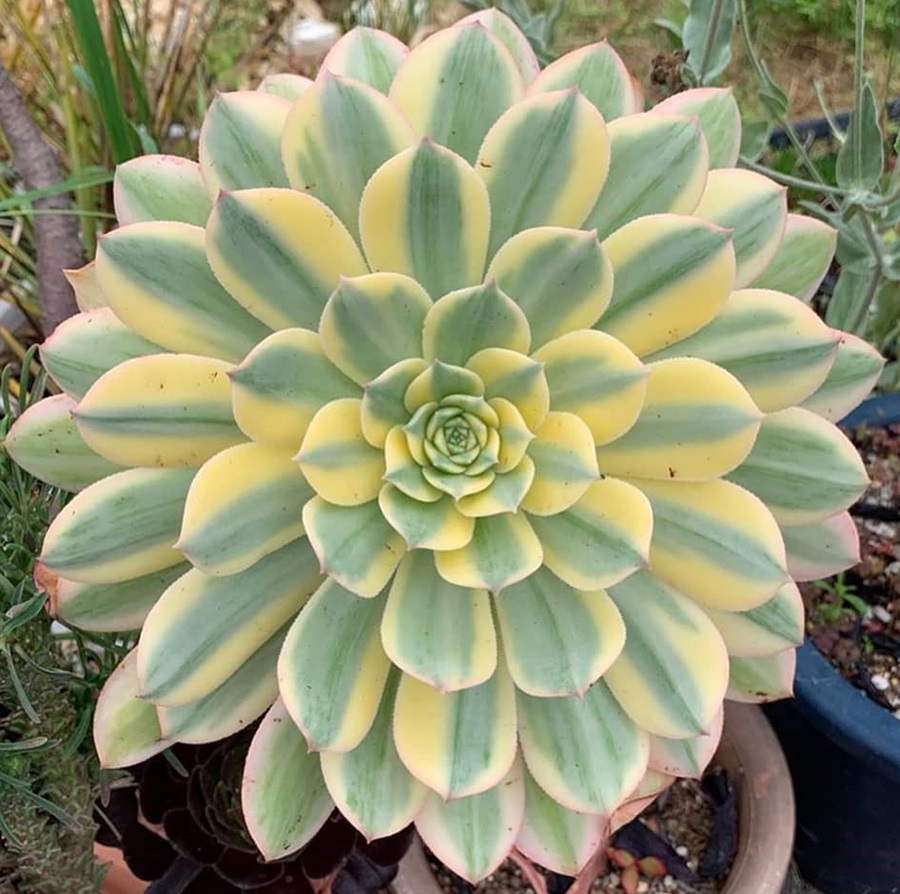
The Aeonium ‘Starburst’ is a captivating succulent known for its lemon-lime appearance. The leaf rosettes become larger towards the exterior, resembling a starburst shape. It’s a stunning addition to any garden.
Aeonium x sventenii
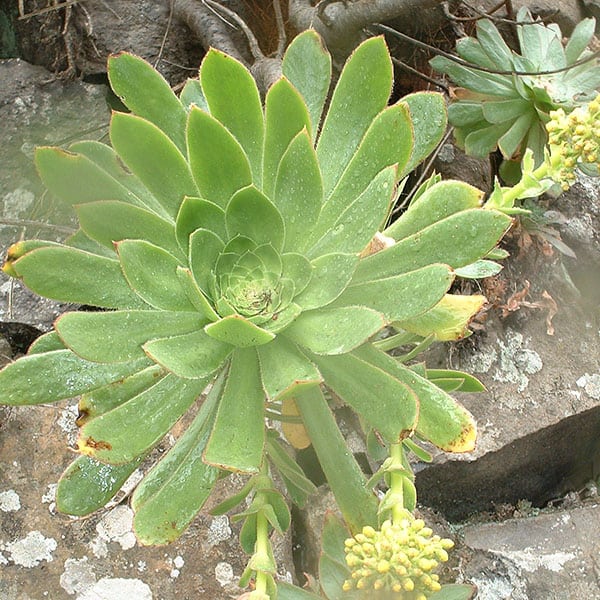
Aeonium x sventenii is a lovely hybrid between Aeonium manriqueorum and Aeonium simsii. It features tall, erect, thick stems with small light green to dark reddish egg-shaped rosettes. In mid-spring, it flourishes with flowers measuring up to 0.6 inches in diameter, ranging from white to pale pink.
Aeonium tabuliforme
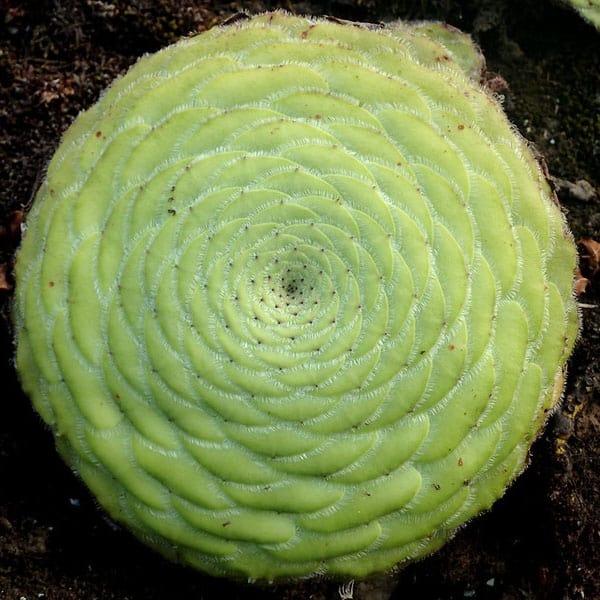
Let’s explore Aeonium tabuliforme, a fascinating stemless succulent that forms pancake-like rosettes. These rosettes are usually single or produce offsets, and their leaves are rounded, soft green, and somewhat spatulate. Aeonium tabuliforme is monocarpic, meaning the flowering stem dies after blooming, usually within three years.
Aeonium x tenensis

Aeonium x tenensis is a captivating Aeonium hybrid between Aeonium ciliatum and Aeonium haworthii. This unique succulent can reach a height of up to 12 inches. It features erect, thick stems that sparingly branch out. The small rosettes, which are light green to dark reddish in color, have diamond-shaped foliage. In mid-spring, it produces beautiful flowers, typically measuring up to 0.6 inches in diameter.
Aeonium undulatum
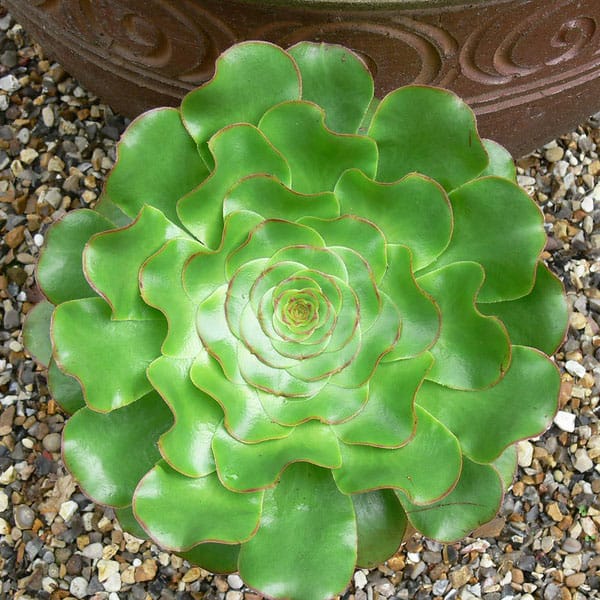
Moving on to Aeonium undulatum, it is a succulent evergreen subshrub, one of the larger Aeonium varieties. It features spoon-shaped leaves that can measure up to 10 inches in length. The leaves have a wavy texture and a metallic-green color. Aeonium undulatum forms large rosettes on stout stems, often standing over 3 feet tall. During summer, the plant produces large inflorescences, rising up to 20 inches above the foliage. The inflorescences are adorned with pale yellow flowers, sometimes tinged with pink, creating a stunning display.
Aeonium urbicum
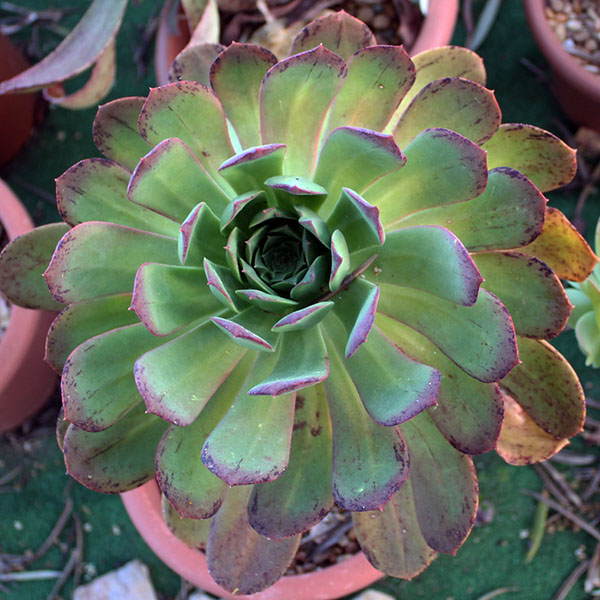
Aeonium urbicum is a perennial unbranched subshrub that can reach a height of up to 6.6 feet. It forms large rosettes measuring 6 to 12 inches in diameter. The leaves are pale green and arranged in loose clusters. The rosettes have a keeled shape on the lower surface and often display a pleasing reddish tint along the ciliate margins. In late spring, the plant produces branched inflorescences that rise above the foliage, featuring very pale yellow to nearly white flowers, sometimes tinged with pink.
Aeonium x wildpretii

Lastly, let’s discover Aeonium x wildpretii, a hybrid between Aeonium palmense and Aeonium holochrysum. This hybrid showcases the best qualities of its parent plants, resulting in a visually striking succulent.
General Aeonium Care
Taking care of your Aeonium plants doesn’t have to be complicated. Here are some easy-to-follow tips to ensure your plants thrive:
Light
Aeonium plants need plenty of direct sunlight, so place them in a bright location, preferably by a south-facing window that receives abundant sunlight. This will help the leaves grow properly and prevent them from becoming deformed or elongated. Aim for a sunny and warm spot to keep your Aeonium happy.
Water
Moderate watering is key for Aeonium plants. The roots should only be slightly moist, so make sure the top 1 to 2 inches of soil are dry before watering again. It’s better to underwater than overwater these succulents. During the resting period, water sparingly to avoid excessive moisture, as this can lead to root rot. Remember that Aeonium plants don’t like waterlogged conditions.
Soil
To create the ideal soil mix for Aeonium, combine nutrient-poor soil and mineral components. About 60% succulent soil or cactus soil, mixed with 40% mineral components such as gravel or perlite, lava rocks, and some quartz sand, will do the trick. This mixture ensures proper drainage and airflow, preventing water from accumulating and promoting healthy root growth.
Climate
Aeonium plants prefer warm temperatures ranging from 65°F to 75°F (18°C to 23°C). During the winter, they enjoy cooler temperatures around 54°F (12°C) and as much direct sunlight as possible. Keep in mind that Aeonium varieties cannot tolerate temperatures below 50°F (10°C).
Fertilizing
During the growth phase, fertilize your Aeonium plants every four weeks using a weak solution of succulent fertilizer. However, avoid fertilizing during the rest period.
Propagating Aeonium Varieties
You can propagate branching Aeonium varieties through cuttings. Cut 1 to 1.5-inch shoots at the beginning of the growing season, let them dry for a few days, and then place them in moistened succulent soil. Roots should start to develop in about three to four weeks. Keep the cuttings in a bright but not completely sunny spot until they’re fully rooted.
You can also propagate Aeonium plants using leaves. Simply pluck or cut a single leaf as close to the rosette as possible. Let the leaf dry for a day and then place it in a succulent-specific substrate. Keep the young plant away from the direct midday sun until the following summer.
By following these care instructions, your Aeonium plants will thrive and bring beauty to your space. Enjoy the process of watching them grow and flourish!
